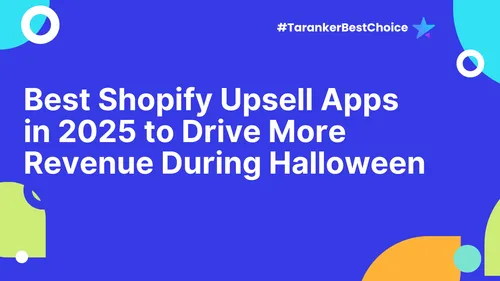The holiday season is a critical time for e-commerce businesses, and using data analytics effectively can make your campaigns more successful. By analyzing data, you gain valuable insights into customer behavior, allowing you to tailor your marketing strategies for maximum impact. Here’s how to leverage data analytics to enhance your holiday campaigns:
1. Analyze Past Holiday Performance

Start by reviewing your previous holiday campaigns. Use data from Google Analytics, Shopify Analytics, or your CRM system to identify trends, top-performing products, and customer preferences. Analyze metrics like conversion rates, traffic sources, and sales peaks to understand what worked well and what didn’t.
Action Steps:
-
Look at the most popular products, peak shopping times, and top traffic sources from last year.
-
Identify which channels (email, social media, paid ads) drove the most conversions.
Pro Tip: Create a report summarizing your findings to inform your current campaign strategy.
2. Use Customer Segmentation for Targeted Marketing

Segment your audience based on demographics, purchase history, and engagement levels. By grouping customers with similar behaviors or preferences, you can tailor your holiday promotions and messages more effectively, increasing the likelihood of conversions.
Action Steps:
-
Segment customers into groups like “holiday shoppers,” “high-value customers,” and “gift buyers.”
-
Use personalized email campaigns to offer tailored discounts and product recommendations.
Pro Tip: Leverage tools like Klaviyo or Mailchimp to create dynamic segments and automate targeted marketing messages.
3. Monitor Real-Time Data for Agile Adjustments

During the holiday season, things can change rapidly. Use real-time analytics to track customer behavior, ad performance, and traffic patterns. Monitoring data in real time allows you to make quick adjustments to your campaign, such as reallocating budget to high-performing ads or optimizing your website for better user experience.
Action Steps:
-
Set up dashboards in tools like Google Data Studio or Shopify Analytics to track key metrics in real time.
-
Monitor your ad performance daily and make adjustments to maximize ROI.
Pro Tip: Use heatmaps (via tools like Hotjar) to see where users are clicking most on your website and optimize key areas.
4. Optimize Ad Spend with Predictive Analytics

Predictive analytics uses historical data and machine learning to forecast future trends. By applying predictive analytics, you can optimize your holiday ad spend by identifying which products are likely to be most popular and targeting the right audiences.
Action Steps:
-
Use tools like Google Analytics 4 or HubSpot for predictive insights on customer behavior and potential high-performing products.
-
Allocate more budget to campaigns targeting segments with higher predicted purchase intent.
Pro Tip: Run A/B tests on different ad creatives and use predictive data to refine your ads in real time.
5. Personalize the Customer Experience with Data Insights

Data analytics can help you understand customer preferences, enabling you to personalize the shopping experience. Use insights from browsing behavior, past purchases, and interaction data to make product recommendations, send personalized emails, and optimize your website layout.
Action Steps:
-
Implement product recommendation engines that suggest items based on customer data.
-
Send personalized follow-up emails with tailored product suggestions and exclusive holiday offers.
Pro Tip: Use dynamic content in your email campaigns to deliver a personalized message to each recipient.
6. Track Campaign Performance and Adjust Strategy Quickly

Keep a close eye on your campaign metrics, such as click-through rates, conversion rates, and average order value. If certain aspects of your campaign aren’t performing as expected, use the data to make timely adjustments, like changing the messaging, updating product listings, or refining your target audience.
Action Steps:
-
Set up regular check-ins (daily or weekly) to review campaign metrics with your marketing team.
-
Use tools like Google Optimize for A/B testing different elements of your campaign, such as ad copy or landing page design.
Pro Tip: Use UTM parameters in your marketing links to track the performance of specific campaigns and traffic sources accurately.
7. Use Data to Plan Post-Holiday Retention Strategies

The holiday season often brings a surge of first-time customers. Use data analytics to identify these new buyers and segment them for post-holiday follow-ups. Send targeted retention emails, offer loyalty program sign-ups, or provide exclusive discounts to keep them engaged into the new year.
Action Steps:
-
Analyze new customer data and create targeted campaigns for post-holiday engagement.
-
Offer special “thank you” discounts or loyalty points to encourage repeat purchases.
Pro Tip: Use predictive analytics to identify which new customers have the highest potential for long-term retention.
Conclusion
Using data analytics is crucial for refining and optimizing your holiday marketing campaigns. By analyzing past performance, segmenting your audience, monitoring real-time data, and making data-driven adjustments, you can boost your holiday sales and set your business up for sustained success. Start implementing these strategies to turn your holiday campaigns into a powerful driver of growth.













